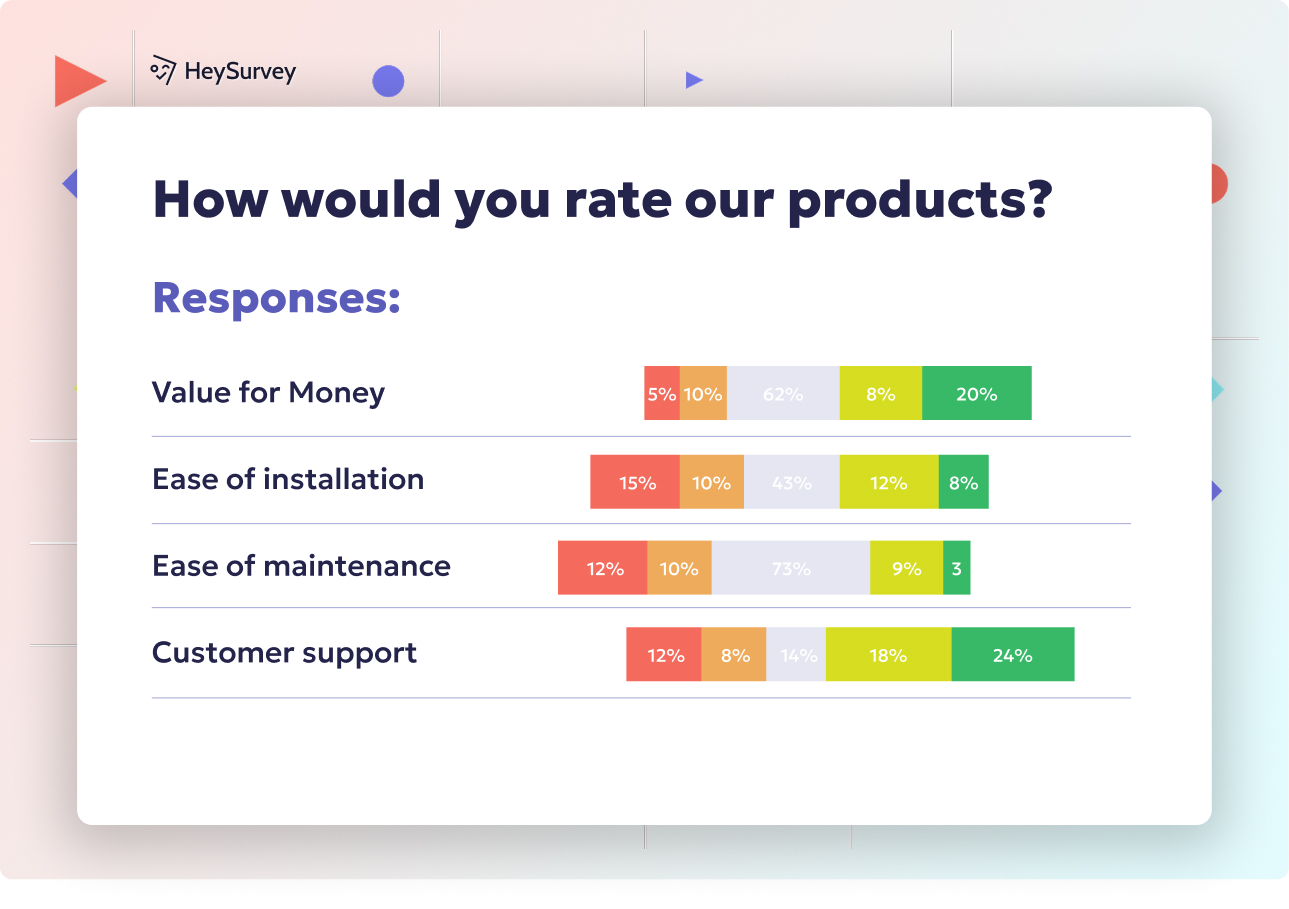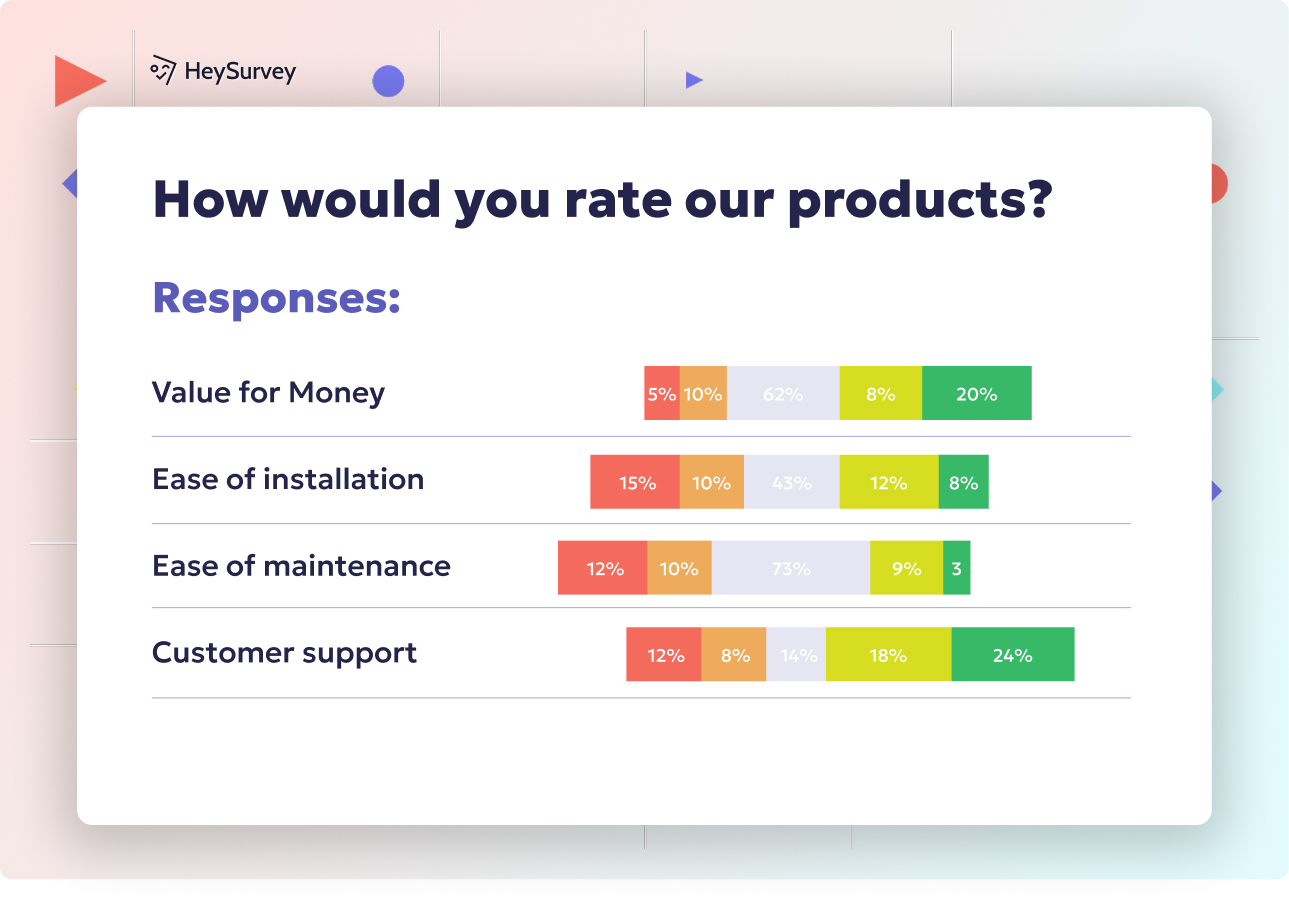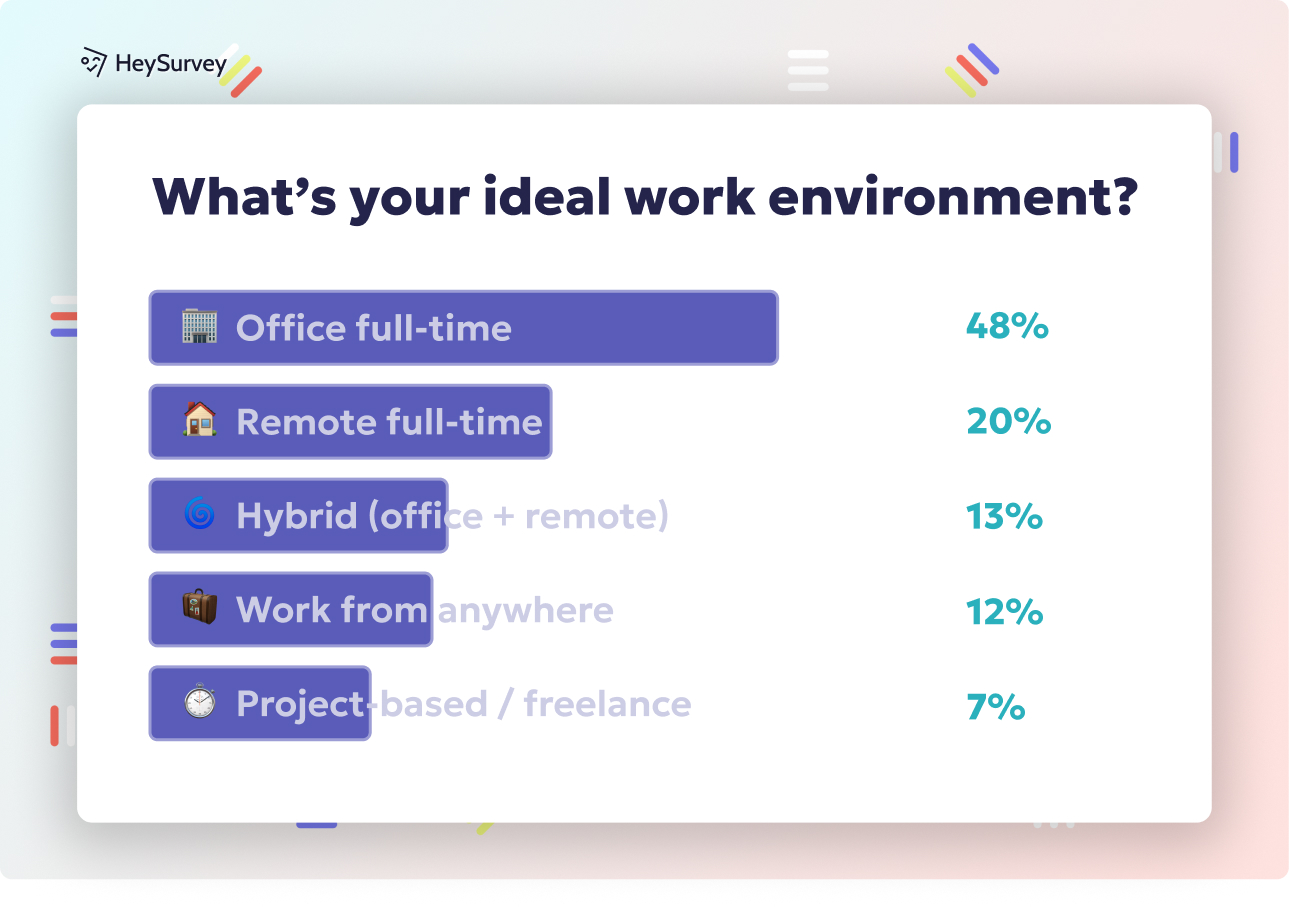30 Survey Questions for Kids: Fun & Effective Kid-Friendly Surveys
Discover 35 engaging survey questions for kids covering topics from classroom fun to emotional well-being with kid-friendly surveys.
Kids love to talk about themselves, and adults have lots of reasons for wanting to listen! From teachers and counselors to researchers and parents, survey questions for kids open doors to honest feedback and help build safe, fun, and successful spaces for growing minds. Whether you’re looking to break the ice at the start of school, check the mood mid-year, gather end-of-project feedback, or even audit student well-being and safety, kid-friendly surveys provide invaluable insight. Ready to spark conversations with children questionnaire? Let’s explore how you can use student feedback forms in every setting.
Icebreaker & Getting-to-Know-You Surveys
Why & When to Use
Fun survey questions for kids are like playdough for classroom culture—they mold friendships and build bridges! Kicking off the year or a new camp session with icebreaker questions for elementary students is the perfect way to spark smiles and uncover personality quirks. Whether your goal is to help shy students open up or simply to set a friendly tone, these surveys invite kids to share their likes, dislikes, and silly sides.
You might use these questionnaires during the first week of school, on a field trip bus ride, or to help campers become instant pals. Creating inclusive spaces starts with knowing who’s in the room. Plus, students feel special when someone genuinely wants to learn about their interests right from the start. When students see their stories matter, engagement skyrockets!
By offering fun, open-ended queries, you’ll find kids quick to answer and quick to giggle. It’s not about grades or tests—it’s about connection. Pick moments when the pressure is low, and curiosity is high.
5 Sample Questions
What is your favorite superpower you wish you had?
Which school subject makes you most excited to learn?
If you could rename our class pet, what would you call it?
How do you like to spend rainy afternoons?
On a scale of 1–5, how much do you enjoy group activities?
Writing Guidance
When designing icebreaker surveys, aim for open questions that invite creativity. - Avoid topics that might leave kids out—like asking about vacations some might not take. - Use language all students understand and give everyone room to answer uniquely. - Remember: a warm, playful opening question can melt nerves faster than sunshine after sleet.
With these ideas, your fun survey questions for kids can set the tone for a vibrant, connected classroom all year long.
Implementing icebreaker activities in classrooms significantly enhances student engagement and participation. (ijssr.ridwaninstitute.co.id)

Creating a survey with HeySurvey is a breeze, even if you’re new to this platform. Follow these simple steps to build your own kid-friendly survey in no time! Ready to get started? You can also launch a template with the button below these instructions.
Step 1: Create a New Survey
- Open HeySurvey and select either an empty survey or start from a pre-built template designed for kids’ surveys.
- Give your survey a clear name so you can easily find it later.
- Once created, the Survey Editor opens, allowing you to start adding content right away.
Step 2: Add Questions
- Click the Add Question button at the top or anywhere between existing questions.
- Choose your question type: multiple-choice, scales, text fields, or fun images—perfect for engaging kids!
- Type each question clearly, using simple language suitable for children.
- For choice questions, consider enabling the "Other" option so kids can add their own answers.
- Mark important questions as required to ensure critical feedback is collected.
Step 3: Publish Your Survey
- Preview your survey with the Preview button to see exactly how it looks on various devices.
- When everything feels perfect, click Publish. (Note: Publishing requires creating a free account.)
- Copy the generated link to share your survey with students, parents, or staff.
Bonus Step 4: Apply Branding
- Access the Designer Sidebar to add logos, customize colors, fonts, and backgrounds.
- This branding helps make the survey inviting and aligned with your school or program identity.
Bonus Step 5: Define Settings or Skip into Branches
- Use the Settings Panel to set survey start/end dates, response limits, and redirect URLs after submission.
- Add branching to personalize the survey flow, guiding kids through different questions based on their answers.
- This keeps surveys short, relevant, and fun!
With HeySurvey, you’re all set to create engaging, insightful children questionnaires that put student voices front and center. Happy surveying!
Classroom Engagement & Learning Preference Surveys
Why & When to Use
Ever wonder which lessons light your students up like a firework, and which ones draw yawns? Student engagement survey for kids help teachers explore what works, what doesn’t, and where a sprinkle of magic might help. With a learning preference questionnaire, you map the mix of learners in your class—from the hands-on builders to the daydreamers and future tech whizzes.
Administer these surveys in the middle of a unit, every term, or whenever you’re curious about your class vibe. This isn’t just about keeping kids busy; it’s about helping them love learning! When students voice their opinions, everyone’s a winner—teachers grow, kids feel seen, and lessons become unforgettable.
A classroom engagement survey is the secret decoder ring for unlocking excitement! It helps uncover what helps new ideas stick, which classroom tech is helpful, and what changes could rev up curious minds.
5 Sample Questions
Do you learn better by seeing pictures, hearing stories, or doing hands-on projects?
What classroom activity helps you remember new ideas the best?
How often do you raise your hand when you’re unsure about something? (Never / Sometimes / Often)
What could your teacher add to make lessons more exciting?
Which tech tool (tablet, laptop, smartboard) helps you learn the most?
Crafting Questions That Work
Simple language and clear choices are your best friends in these surveys. - Give students examples to jog their memory. - List real tech tools they’ve seen, rather than generic terms. - Let students know there’s no “wrong” answer—everyone learns their own way.
Design your learning preference questionnaire to be quick, clear, and curiosity-driven. This way, every answer helps make tomorrow’s classroom even better!
The ASPECT survey effectively measures student engagement in active-learning classrooms by assessing the value of activities, personal effort, and instructor contribution. (lifescied.org)
Emotional Well-Being & Mental Health Check-In Surveys
Why & When to Use
Kids’ feelings can be big, bold, and sometimes hard to spot. That’s why a mental health survey for kids is essential. These quick emotional check-in questions give both adults and students a way to name feelings, catch stress early, and champion social-emotional growth.
Weekly check-ins or surveys during high-stress times, like exam weeks, prove invaluable. Kids who feel emotionally supported take more risks, ask more questions, and bounce back faster from challenges. Just having the chance to choose an emoji describing their mood can brighten a rough morning!
Check-in surveys are the rainbow after a storm—letting students know their emotions matter and that every feeling is safe to share. Building this habit demystifies mental health and helps students get help before problems grow.
5 Sample Questions
Today I feel… (happy / okay / sad / worried / angry).
Who at school can you talk to when you feel upset?
What activity helps you calm down when you’re stressed?
How safe do you feel expressing your feelings in class? (1–5 scale)
If you had a “feelings mailbox,” would you use it? Yes/No
Tips for Supporting Young Voices
Short check-ins, offered regularly, let students know support is always near. - Consider using visuals or emojis alongside text to help non-readers. - Keep surveys anonymous for sensitive topics. - Ensure every student knows where to turn if their answer points to needing extra help.
With emotional check-in questions, you’ll not only spot trouble early—you’ll nurture empathy, trust, and joyful school days.
Bullying & School Safety Climate Surveys
Why & When to Use
Every child deserves to feel completely safe at school. Through a bullying survey questions for elementary students, schools uncover where they excel at safety—and where hidden problems may bubble. Distribute these anonymously around the middle of the term, when routines are set and kids know their classmates.
A school safety questionnaire isn’t just about finding problems; it’s about empowering students to speak up. These surveys can reveal bullying hotspots, check how students feel about adult support, and spark conversations about solutions. Sometimes, the answers point to small changes that make a world of difference, like a staff member posted by the playground or a bigger mailbox for anonymous reporting.
Being honest about school climate helps every child know their safety is a top priority—and tells bullies their actions won’t be ignored!
5 Sample Questions
Have you seen someone being bullied in the past month? Yes/No
Where in school do you feel least safe?
If you’re bullied, do adults help quickly? (Never / Sometimes / Always)
How easy is it to report bullying at our school?
What one change would make school safer for everyone?
Building Trust with Safety Surveys
Anonymity and choice are crucial to honest answers. - Avoid asking for names or personal stories unless students volunteer. - Follow up on any patterns or urgent issues your survey reveals. - Make sure students understand what “bullying” means—give clear, age-appropriate examples.
By using a school safety questionnaire thoughtfully, educators turn feedback into action and transform school into a safer, happier place for all.
Anonymous surveys can effectively assess bullying prevalence and inform targeted interventions, but they may not identify individual victims for direct support. (stopbullying.gov)
Extracurricular Interests & Hobbies Surveys
Why & When to Use
A great school is more than books and backpacks—it’s full of clubs, crafts, and places to play! An after-school survey for kids guides schools as they plan clubs, holiday camps, and after-class adventures. These surveys also uncover hidden talents and foster friendships across different interests.
Distribute your children’s hobbies questionnaire when planning timetables or working out the budget for programs. Equitable, exciting activities begin with knowing what students actually want! Even better, these questions get kids dreaming about what could be. Who knew your next chess champion also wanted to try drama club?
Being asked about hobbies shows that their passions matter—not just their math facts. Kids get more involved, and attendance rises when they’ve had a say.
5 Sample Questions
Which sport would you most like to try this year?
Do you prefer art, music, or coding club after school?
How many days a week could you join an after-school activity?
What is one hobby you wish the school offered?
Would you invite a friend to join a new club with you? Yes/No
Inspiration for All Interests
Multiple-choice and open-ended questions create a full picture of your students’ interests. - Offer a mix of “choose one” and “dream big!” options. - Give students space to suggest entirely new clubs or activities. - Use their responses to co-design programs—making children partners in planning.
With the right after-school survey for kids, you’ll discover the hidden artists, inventors, and future world-changers sitting right beside you.
Family & Home Environment Insight Surveys
Why & When to Use
No child’s story is complete without understanding their life outside school. A family questionnaire for kids reveals what helps or hinders homework time, languages spoken at home, and which spaces let kids relax. Use these home environment surveys before conferences or whenever you want to support families more thoughtfully.
Strong home-school partnerships ensure every student thrives, especially when teachers know if a child is sharing a bedroom with siblings, or speaks another language at home. These surveys help teachers plan, care teams connect, and parents feel heard—not judged. Your job isn’t to “fix” home life—it’s to listen, adapt, and provide resources when families ask.
When teachers know what’s happening after 3pm, they can make smarter homework assignments and recognize when a student needs extra encouragement or flexibility.
5 Sample Questions
How many people help you with homework at home?
What language(s) do you speak most at home?
Do you have a quiet place to read or study? Yes/No
How often does your family eat dinner together? (Never / Some days / Most days)
What is one thing you love doing with your family on weekends?
Gathering Home Insights
Sensitive, respectful language helps families open up. - Only ask what you truly need to know to support the child. - Never force an answer—offer “I’d rather not say” as a valid option. - Use what you learn to shape your classroom practices, not to judge.
By inviting honest responses on your home environment survey, you’ll build trust and unlock new ways to support every learner in your care.
Future Aspirations & Career Dreams Surveys
Why & When to Use
Even little ones dream big about what they’ll become one day! A career interest survey for kids helps educators and parents fuel those dreams and make learning relevant. Administer your dream job questions for children at the start or end of each school year, before career days, or when brainstorming curriculum themes.
These surveys can highlight early passions or untapped ambitions—letting kids picture themselves as veterinarians, astronauts, teachers, or inventors. When students see that adults believe in their ambitions, their self-confidence blossoms. It’s a roadmap for field trips, guest speakers, and even classroom experiments tailored to real interests.
Plus, asking about confidence turns these surveys into mini goal-setting sessions. You can encourage future scientists, builders, or leaders while they’re still dreaming with crayons.
5 Sample Questions
What job sounds exciting to you right now?
Which subject do you think will help you reach that dream?
Would you like to visit a workplace to learn more? Yes/No
If you could invent something to help people, what would it be?
How confident are you that you can reach your dream job? (1–5 scale)
Turning Dreams into Goals
Positive, open-ended questions inspire creative responses from every child. - Mention all sorts of jobs, not just what’s “popular” or traditional. - Celebrate creative inventions and new ideas—even ones that sound wild. - Give students a way to revisit their answers, sparking ongoing conversations about growth and passion.
With a career interest survey for kids, you’ll help turn today’s daydreamers into tomorrow’s real-world doers.
Dos and Don’ts: Crafting Kid-Friendly Surveys for Maximum Insight
Designing a child-centered survey isn’t just about picking fun questions—it’s about tuning in to what kids need to thrive. Here are the golden rules for creating age-appropriate questionnaires that spark honesty and excitement instead of anxiety or boredom.
Dos
- Keep language simple and at grade level so everyone can understand.
- Use visuals or emoji scales, especially for non-readers.
- Allow for anonymity with sensitive topics or personal opinions.
- Test your questions with students if you can!
- Offer “skip” or “I don’t know” options for tricky questions.
- Share back what you’ve learned, so kids see you value their input.
- Adjust the length and complexity based on the age group—short and sweet for the youngest.
Don’ts
- Don’t use double-barreled questions (asking two things at once).
- Avoid jargon or grown-up terms that may confuse students.
- Don’t load the survey with too many questions—attention spans are precious!
- Skip “why” questions that put kids on the spot—try “what” or “how.”
- Never ask about things kids can’t control (like money at home).
- Don’t make students write long essays—multiple-choice and checkboxes are your friends.
- Avoid asking for specifics kids might not remember, like dates or times.
Accessibility & Ethical Considerations
A great child-centered survey design keeps every learner in mind. - Ensure your forms are usable with screen readers or assistive devices. - Offer translations for non-English speakers. - Secure parental consent as needed, especially for research or sensitive topics. - Clearly explain how answers will be used and keep data private.
By making every question accessible and ethical, you’ll get the most honest, creative, and meaningful responses possible.
Kids’ surveys are your secret to understanding what students need to thrive, laugh, and aim for the stars. Start small, listen closely, and let student voices guide your next steps—one question at a time.
Related Student Survey Surveys

31 Survey Questions Examples for Students to Improve Learning
Discover 28 survey questions examples for students across 6 key types to boost engagement, feedba...

29 Class Survey Questions: Proven Templates for Every Stage
Discover 40+ proven class survey questions with detailed templates for every course stage to boos...

30 Survey Questions for Students: 6 Types & When to Use Them
Explore 6 powerful survey types with 30+ sample survey questions for students to boost engagement...

